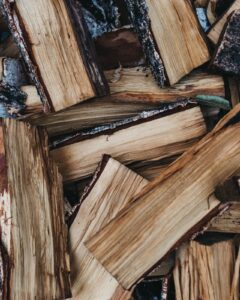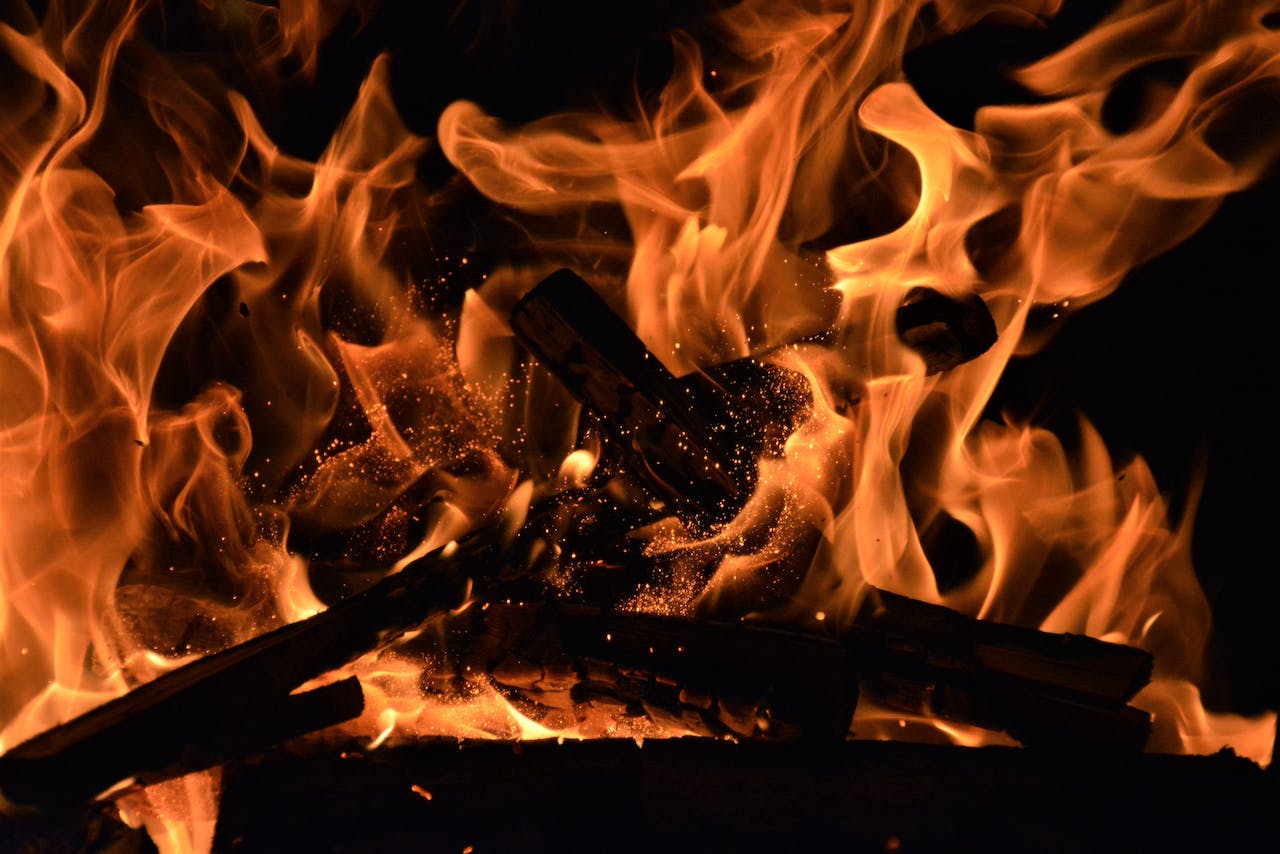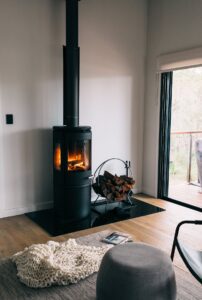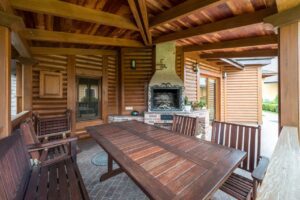
Choosing the Perfect Size and Shape for Your Firewood: A Handy Guide
Any room may be made into a comfortable shelter with the immortal warmth and ambiance of a blazing fire in the fireplace. Notwithstanding, the firewood’s

A classic wellspring of comfort is a blazing fire in the fireplace, particularly on winter evenings. In any case, inaccurate information regarding firewood could result in underworldly consumption and even conceivable safety gambles. We’ll disperse many confusions about firewood in this extensive article, giving you factual information to guarantee a safer and more pleasurable time spent by the fireplace.
Before investigating the myths, let us examine the significance of firewood in establishing the ideal ambiance around the fire. More than basic fuel, firewood is an essential part that affects your fireplace’s adequacy, safety, and beauty.
Your fireplace’s main fuel source is firewood. Your decision on wood has an immediate impact on ignition. Hardwoods with a more drawn-out consuming time, give heat that lasts longer. On the other hand, softwoods, like cedar and pine, ignite easily and are ideal for fuel.
Past just filling a practical need, the firewood you decide for your fireplace also affects its stylish appeal. Very much-picked firewood produces dancing flames and crackling clamors that work on the atmosphere of the entire living area. Contemplate picking your firewood according to the outcome you want for the most ideal fireside experience. For those cozy winter nights, hardwoods are great for long, nonstop consumption. Softwoods are essential for touching off and sustaining a vibrant fire because of their rapid start qualities.
We should now scatter common misinterpretations about firewood and give the facts so you may make wise decisions for a safer and more pleasurable firewood experience.
Although it’s easy to believe firewood to be a universal fuel source, the sort of wood you pick has a major effect on how your fireplace functions. Hardwoods with a more drawn-out consuming time and higher heat yield, are ideal for extended, comfortable flames. Softwoods, for example, tidy and pine, consume all the more rapidly when they light, making them ideal for fuel.
Use a combination of hardwoods and softwoods for an even fire. For a more strong, longer-lasting fire, go from softwoods to hardwoods as you start involving them for fuel.
Knowing the characteristics of various sorts of wood is crucial while attempting to assemble the ideal fire. Because they are denser, hardwoods will consume gradually and steadily, expanding the existence of your fire all through the night. Nonetheless, softwoods consume rapidly, making them a great decision for immediately starting a cozy fire.
Because green or unseasoned wood has a high dampness content, it consumes less effectively, delivers more smoke, and causes more creosote to accumulate in your fireplace. Allowing wood to dry out makes it more seasoned and ignites with less smoke and creosote.
Pick seasoned wood that has around 20% dampness content or less. In addition to consuming cleaner, appropriately seasoned wood brings down the chance of fireplace fires.
Allowing wood to mature gracefully is similar to seasoning it. Because of its high dampness content, greenwood hinders ignition, creating more smoke and increasing the probability of chimney stack issues. Then again, seasoned wood guarantees cleaner consumption and less damage to the trustworthiness of your smokestack.
Although pine is generally accessible and rapidly touches off, consuming pine exclusively may pose challenges. Pine has a high-pitch content, which may cause creosote to develop in the chimney stack and raise the danger of smokestack fires.
Use pine sparingly, and join it with hardwoods to forestall the abundance of creosote. While consuming resinous wood in particular, make sure your smokestack is cleaned regularly.
Pine consumption could have two drawbacks. Although it smells pleasant and touches off rapidly, the high sap concentration causes creosote accumulation. If you want the advantages of pine without sacrificing safety, add it sparingly to your firewood mix.
Certain types of wood are not meant to be sung in a fireplace. Consuming treated or painted wood produces dangerous chemicals that may be damaging to one’s health. Also, certain woods like eucalyptus will generally light exorbitantly, which may be dangerous.
Pick hardwoods or softwoods that have been appropriately seasoned and ensured safe for indoor consumption. To avoid the discharge of harmful chemicals, don’t utilize treated or painted wood wastes.
You shouldn’t discard any wood you track down in your fireplace. Consuming treated or painted wood releases poisonous mixtures up high, endangering human health. To maintain a protected and comfortable inside space, just utilize the sorts of firewood that are approved.
The dampness level of your firewood is straightforwardly affected by how you keep it. Wood that has been stacked straightforwardly on the ground or in a wet climate may become moister, which will make it more challenging to light and give a smokier consumption.
To protect firewood from rain and snow, store it on an elevated platform off the ground and cover the top. This guarantees your firewood stays very well seasoned and prepared for powerful consumption. The outing of your firewood doesn’t complete when it’s conveyed; storage is important. The wood stays dry and ready to start a pleasant fire anytime you want it if stacked on an elevated platform and is safeguarded from the weather.
Regardless of whether a roaring fire makes for a comfortable climate, indoor air quality should be thought of. On the off chance that the fireplace isn’t all around aired, deficient consumption and the discharge of pollutants like carbon monoxide may happen.
To lessen the chance of dangerous discharges, make sure your fireplace is appropriately ventilated and plan routine chimney stack cleanings and reviews. It’s enjoyable to twist up before a fireplace, however there are obligations included. Hazardous contaminants may be released into your living area because of inadequate burning. Maintaining a chimney stack and directing regular ventilation is essential to utilizing a fireplace without sacrificing the quality of the air inside.
A prevalent misperception is that smokestack cleaning is necessary when a conspicuous issue arises. In actuality, creosote develops in even all-around maintained fireplaces after some time, making regular cleaning necessary to avoid smokestack fires.
Plan yearly cleanings and examinations of your stack, particularly assuming that you utilize the fireplace frequently. Your fireplace will operate safely and successfully thanks to this proactive approach. The requirement for smokestack repair isn’t sporadic. A side-effect of consuming wood that may work over the long haul and cause a fire is creosote. A safe and functional fireplace requires regular cleanings and examinations.
Keeping firewood inside needs careful planning. Utilizing untreated containers increases the danger of attracting irritations like termites or ants. Also, if the wood isn’t very much aired, indoor storage may cause its dampness content to rise.
Make utilization of specialized firewood racks or containers with enough ventilation. Get firewood far from walls at a safe distance to keep bothers out of your home.
Bringing the external inside could unintentionally bring unwanted guests. Putting away firewood needs careful planning. To keep bothers out of your firewood, utilize specialized racks or containers, and make sure there is sufficient ventilation.
By scattering the above widespread misinterpretations about firewood, you can make wise choices for a safer and more satisfying fireplace experience. To capitalize on this age-old wellspring of warmth and ambiance, whether you’re a seasoned fireplace darling or a juvenile to wood-consuming, you ought to grasp the nuances of fuel determination, storage, and use. May your flames sparkle brilliantly and safely as you go off on your next fireside adventure, equipped with appropriate information. By using the above-concentrated firewood pieces of information, you can deal with the pleasure of using your fireplace while also making your home safer and cozier. Accept the comfort, the crackling, and the magic of a particularly kept fireplace, and let the tales fade into the night sky like smoke.

Any room may be made into a comfortable shelter with the immortal warmth and ambiance of a blazing fire in the fireplace. Notwithstanding, the firewood’s

The charm of a snapping fireplace is an immortal enjoyment that adds comfort and warmth to houses around. In any case, choosing the fitting firewood

Fireplace safety for children and pets. Certainly charming, a thundering fire in the hearth makes a warm warmth that transforms a room into an agreeable

Where warmth and magnificence meet in the focal point of your home is your chimney; subsequently, the fuel you decide for it has more significance